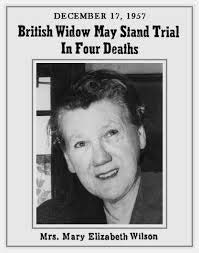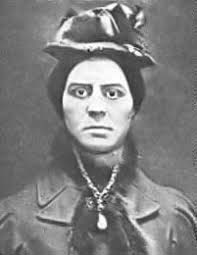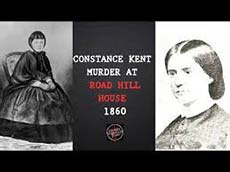Sunday 21 July 2024

Lady Killers
Speaker: Michael Astrop
Michael told us about five cases of homicide where the accused was female and, after each one, would ask his audience whether they thought she was guilty or not guilty.
He began with the 'Case of the Poisoned Dumplings'. The suspect was Eliza Fenning, aged around 20 years old, who had been employed as a cook by Robert and Charlotte Turner. Along with Eliza, there was a maid called Sarah Peer, and two footmen.
Eliza joined the household in January 1815, and an incident happened about seven weeks later, when the family were entertaining guests. Eliza had cooked them a meal of steak, potatoes, and dumplings. All of the people dining had severe stomach pains and vomited shortly after they had started eating their dumplings.
It was subsequently found that arsenic had been put into the dumpling batter, and Eliza was arrested shortly afterwards. She subsequently appeared before Judge Sir John Silvester at the Old Bailey.
Charlotte Turner gave evidence that she had discovered Eliza, partly dressed, in the room where the two footmen slept, and gave her a warning about her behaviour. The inference was that Eliza was taking revenge on the family, as well as often asking them to eat her dumplings.
The judge found Eliza guilty and sentenced her to death. Our members were divided in their verdicts, but in 1829 Robert Turner confessed to the murder shortly before his own death. It was found that he had a history of wild and deranged behaviour.
 The next case concerned a woman called Mary Elizabeth Wilson, also known as 'The Merry Widow of Windy Nook'. She was married four times, firstly in 1948. But, as well as this husband, she also had a lover called John Russell, who moved in with the couple. Her husband died in 1955, and she married John Russell. But then he died in 1956. The attending physician said that both men has died of natural causes.
The next case concerned a woman called Mary Elizabeth Wilson, also known as 'The Merry Widow of Windy Nook'. She was married four times, firstly in 1948. But, as well as this husband, she also had a lover called John Russell, who moved in with the couple. Her husband died in 1955, and she married John Russell. But then he died in 1956. The attending physician said that both men has died of natural causes.
The following year she married an estate agent called Oliver Leonard, but then he died after only 12 days into the marriage. Her next, and final, marriage was to Ernest Wilson who died within a year. She did not attend his funeral.
Soon after this, the police began to investigate, and it was found that all of the bodies, when exhumed, had traces of phosphorus. The first two husbands were said to have used phosphorus prescribed by their doctor. Our members overwhelmingly found Mary guilty, as did her jury in 1957. Her death sentence was commuted to imprisonment, and she died in Holloway prison in 1962.
 Next up was a case known as 'The Richmond Murder', and of Julia Martha Thomas, a widow in her 50s. She was a very demanding woman, who was critical of the work carried out by servants she employed, and dismissed them - or they left their posts. Julia subsequently engaged another maid, Kate Webster, an Irishwoman, early in 1879.
Next up was a case known as 'The Richmond Murder', and of Julia Martha Thomas, a widow in her 50s. She was a very demanding woman, who was critical of the work carried out by servants she employed, and dismissed them - or they left their posts. Julia subsequently engaged another maid, Kate Webster, an Irishwoman, early in 1879.
The two women didn't exactly gel, and Julia began to criticise the work done by her latest maid. The last entry in Julia's diary said 'Gave Katherine warning to leave.'
Kate Webster then seemed to have disappeared at the end of February, but this was, according to local gossip, not unusual for her. In March a local publican called John Church was found to be selling items of Julia's furniture. When questioned, he said that Kate had sold the items at Julia's request because she, Julia, was going away for a very long time.
Neighbours and friends of Julia became suspicious, and the police became involved. Kate was subsequently arrested, and charged with Julia's murder. She confessed the night before her execution, and was hanged. Julia's body had been dismembered, and some parts had been discovered, but not her head. Her skull was found in 2010, buried in a garden of a house then owned by David Attenborough. Webster had disposed of the body by dismembering it, boiling the flesh off the bones, and throwing most of the remains into the River Thames. Another guilty verdict, to the surprise of most of the audience.
The penultimate case involved the death of a toddler called Francis, one of a quite large number of children fathered by Mr. Samuel Savile Kent. Quite well known for his adultery, Samuel had remarried after his wife died. Three more children were born as a result of this, and one of them, Francis, went missing from his bed during the night of 28th June 1860.
 This was discovered the morning after, and the child's mutilated body was found in an outdoor privy used by the servants. Suspicion fell on the children's nanny, Elizabeth Gough; who was said to have been seen with her lover by young Francis.
This was discovered the morning after, and the child's mutilated body was found in an outdoor privy used by the servants. Suspicion fell on the children's nanny, Elizabeth Gough; who was said to have been seen with her lover by young Francis.
The case was investigated by a detective called Jack Whicher, subject of a recent TV series. Jack didn't solve the case, and Elizabeth Gough was innocent. Most, if not all, of the audience agreed. In 1865, Francis's elder sister, 21 year old Constance Kent, confessed to his murder. She pleaded guilty at court and was sentenced to death, but Queen Victoria commuted this to life imprisonment.
Constance changed her name, and eventually emigrated to Australia. Two months before her death, she had received a telegram from King George VI, to mark her 100th birthday.
Our final murder for consideration involved Alma Rattenbury. She was born in Canada, shortly before the beginning of the twentieth century and became a songwriter and musician. Her first husband had died in World War one, and in 1920 she married Francis Rattenbury, a well known architect, after a two year affair - allegedly one of several.
The couple subsequently emigrated to Britain and lived in Bournemouth. Alma began a relationship with George Stoner, aged 18, whom they had employed as a chauffeur. By this time Alma was 42, and she and her husband had started to sleep apart - Francis knew about the affair. They actually slept on separate floors of their home, the Villa Madeira.
In March 1934, Francis Rattenbury was found unconscious with head injuries, having been attacked by someone with a mallet - the assault so vicious that the victim's dentures flew out of his mouth. Francis died a few days later.
Alma discovered the body but said she had been upstairs when the attack happened and heard nothing. George Stoner had been outside the villa, and said that he saw someone entering the property. After a couple of days, Alma admitted the murder, and was arrested.
But later, she denied the crime. So…guilty or not guilty? The audience's verdict, almost unanimous, was 'not guilty'. And that was correct. George Stoner eventually confessed to the murder, saying it was because the married couple planned to go on a trip away, when they would have to sleep together. George became so upset and jealous about this that he murdered his employer.
A quick count up of verdicts from the audience, and vote of thanks, concluded a perhaps unexpected but fascinating talk from Michael.
The next Todmorden U3A Monthly Members Meeting will be on Thursday 15th August at 2pm, open to all fully paid-up members at the Todmorden Learning Centre and Community Hub (TLCCH), Todmorden. The speaker for this meeting is Brian Topping, presenting 'More Tales from a Customs Officer'.
Not yet a member? We're always delighted to welcome new members. Contact details: website at www.u3atod.org.uk or email at info@u3atod.org.uk.
Many thanks to Colin Sanson for this report
Previous U3A reports on the HebWeb - click here

